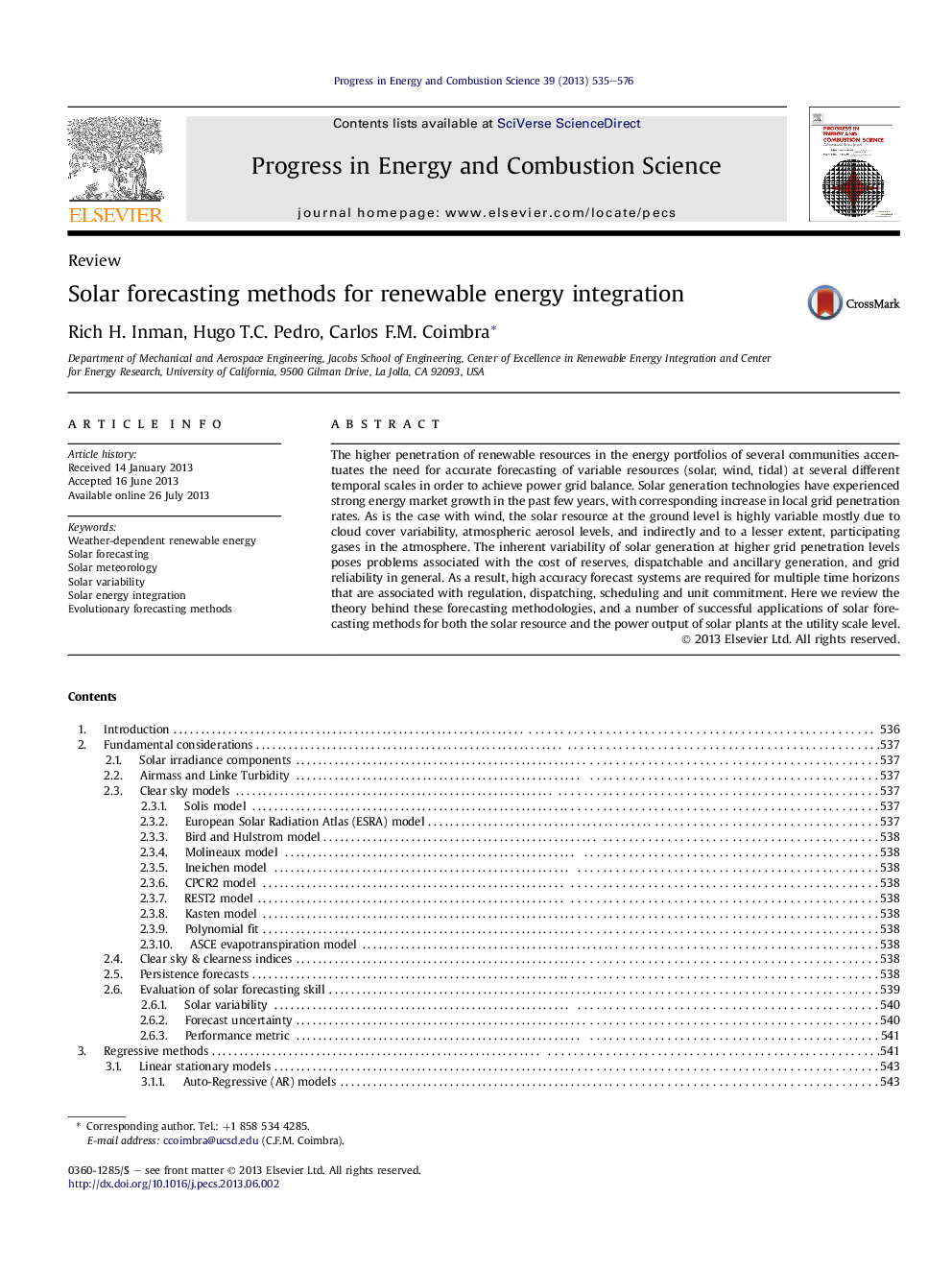| Article ID | Journal | Published Year | Pages | File Type |
|---|---|---|---|---|
| 241676 | Progress in Energy and Combustion Science | 2013 | 42 Pages |
The higher penetration of renewable resources in the energy portfolios of several communities accentuates the need for accurate forecasting of variable resources (solar, wind, tidal) at several different temporal scales in order to achieve power grid balance. Solar generation technologies have experienced strong energy market growth in the past few years, with corresponding increase in local grid penetration rates. As is the case with wind, the solar resource at the ground level is highly variable mostly due to cloud cover variability, atmospheric aerosol levels, and indirectly and to a lesser extent, participating gases in the atmosphere. The inherent variability of solar generation at higher grid penetration levels poses problems associated with the cost of reserves, dispatchable and ancillary generation, and grid reliability in general. As a result, high accuracy forecast systems are required for multiple time horizons that are associated with regulation, dispatching, scheduling and unit commitment. Here we review the theory behind these forecasting methodologies, and a number of successful applications of solar forecasting methods for both the solar resource and the power output of solar plants at the utility scale level.
